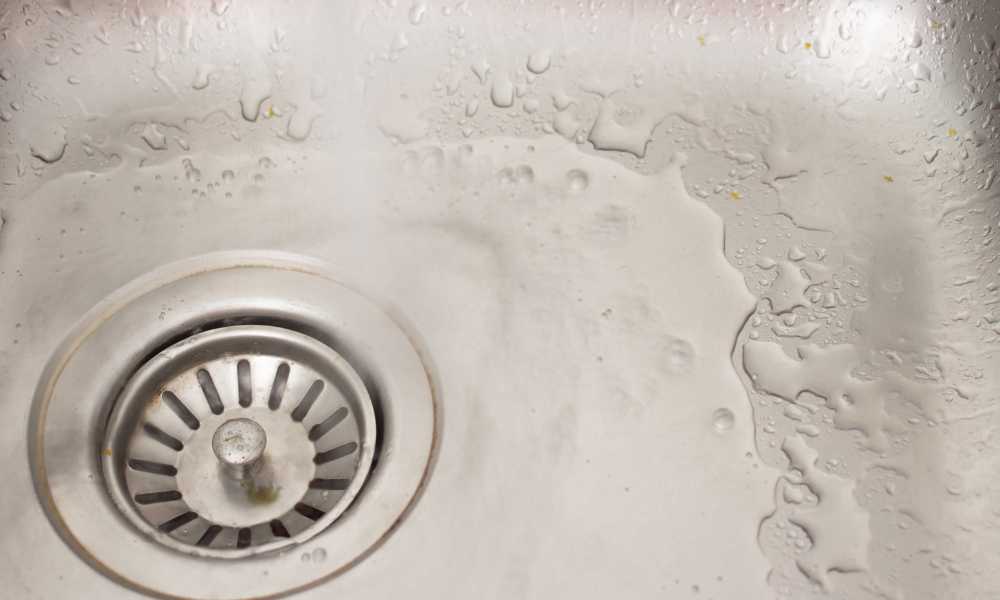If your dishwasher isn’t draining properly, it can lead to standing water, unpleasant odors, and poor cleaning performance. Understanding how to drain a dishwasher is essential for maintaining its efficiency and preventing costly repairs. Whether you’re dealing with a clogged drain, a blocked filter, or a malfunctioning pump, addressing the issue promptly can restore your dishwasher to optimal function. In this guide, we’ll walk you through the necessary steps to identify and fix drainage problems. With simple tools and a little know-how, you can troubleshoot and resolve most dishwasher drainage issues on your own. Let’s dive into the solutions to get your dishwasher working like new again!
Why Your Dishwasher Might Not Be Draining
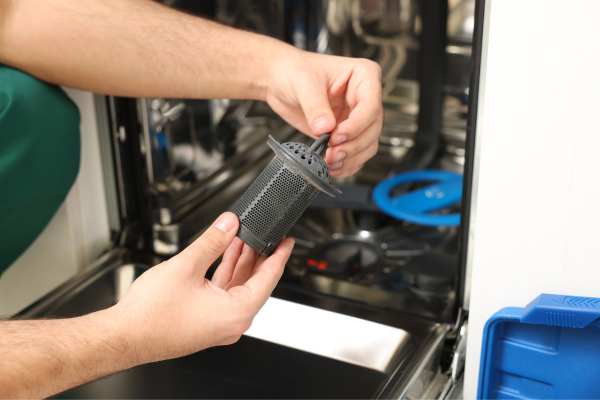
If your dishwasher isn’t draining properly, it’s important to first identify the cause of the issue. Common culprits include a clogged drain, a faulty pump, or a blocked hose. A clogged drain can prevent water from flowing freely, while a malfunctioning pump may fail to push water out. A blocked hose can obstruct the drainage path, causing standing water. Understanding why your dishwasher might not be draining allows you to pinpoint the problem and take the right steps toward fixing it. By troubleshooting these potential issues, you can resolve drainage problems quickly and restore your dishwasher’s performance.
Safety First: Power Off and Unplug the Dishwasher
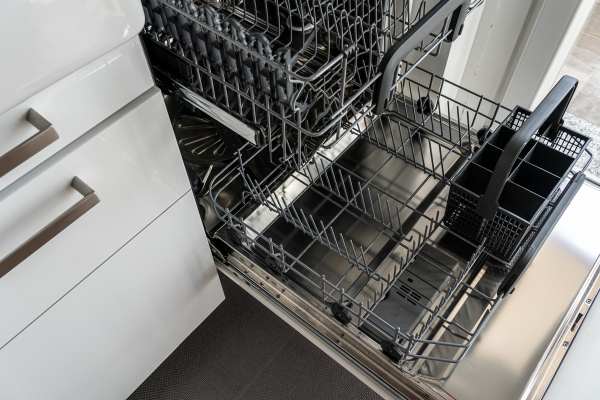
Before attempting to drain your dishwasher, safety should always be your top priority. Never start troubleshooting or maintenance without ensuring the dishwasher is completely powered off. Unplugging the Dish cleaning machine from the electrical outlet prevents any risk of electrical shock while working on the appliance. Additionally, turning off the Dish cleaning machine ensures that there’s no water circulating inside, preventing unexpected spills or leaks during the process. Taking these simple precautions will help protect you from accidents and make the entire draining process smoother and safer. Always remember: when in doubt, power down before starting any maintenance work.
Inspect the Drain Hose
Troubleshooting drainage issues, it’s essential to inspect the drain hose. This hose connects your dishwasher to the plumbing system, carrying wastewater away. Over time, the hose can become kinked, clogged, or even blocked, preventing proper drainage. To inspect it, start by locating the hose at the back of your Dish cleaning machine and follow it to where it connects to the sink drain or garbage disposal. Check for any visible bends or obstructions. A blocked or kinked hose is often the culprit for drainage problems and can easily be cleared to restore proper function. Regular checks can help avoid more significant issues and keep your Dish cleaning machine running smoothly.
Check the Dishwasher Filter
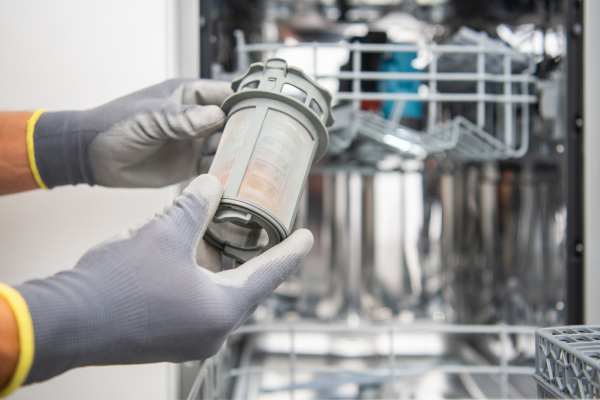
Troubleshooting how to drain a dishwasher, don’t overlook the filter. A clogged filter can easily block water flow, causing drainage problems. It’s essential to clean the filter regularly to ensure proper drainage and avoid potential buildup. To clean it, start by locating the filter, usually at the bottom of the Dish cleaning machine . Remove any large debris, and gently rinse it under warm water. For stubborn particles, use a soft brush to scrub away any residue. Make sure the filter is fully dry before reinserting it. By performing this simple task regularly, you’ll help maintain your dishwasher’s efficiency and avoid costly repairs down the line.
Examine the Drain Pump
Learning how to drain a dishwasher, don’t overlook the importance of the drain pump. The pump plays a critical role in expelling water from the dishwasher and into the drainage system. If your dishwasher isn’t draining, a malfunctioning pump may be to blame. To inspect the pump, start by unplugging the Dish cleaning machine and removing the bottom rack. Check for visible blockages or debris around the pump area. You can also test the pump’s functionality by listening for any unusual noises during the drain cycle. If the pump appears damaged or ineffective, it may need to be replaced for your Dish cleaning machine to drain properly.
Look for Blockages in the Garbage Disposal (if applicable)
Troubleshooting drainage issues, don’t overlook the garbage disposal, especially if it’s connected to your dishwasher drain line. A blockage in the disposal can restrict water flow, preventing your dishwasher from draining properly. If you notice standing water after a cycle, check the disposal for any food particles or debris. Avoid running the Dish cleaning machine while the disposal is clogged, as this can worsen the issue. To clear the blockage, turn off the power, then remove any visible debris from the disposal. If the problem persists, use a plunger or call a professional to ensure the drain line is clear and free of obstructions.
Inspect the Air Gap (for Dishwashers with an Air Gap)
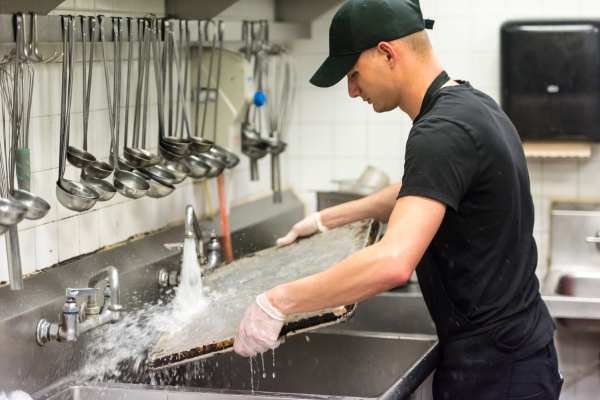
If your dishwasher has an air gap, don’t overlook it when troubleshooting drainage issues. An air gap is a small device that prevents wastewater from flowing back into your Dish cleaning machine , ensuring proper drainage. Over time, debris and grime can build up, blocking the air gap and causing drainage problems. To check it, first locate the air gap, usually installed on the countertop or sink. Remove the cover and inspect for any visible blockages. Use a small brush or compressed air to clear out any debris. Regularly cleaning the air gap can help prevent clogs and ensure smooth drainage, keeping your Dish cleaning machine functioning properly.
Run the Dishwasher with Hot Water
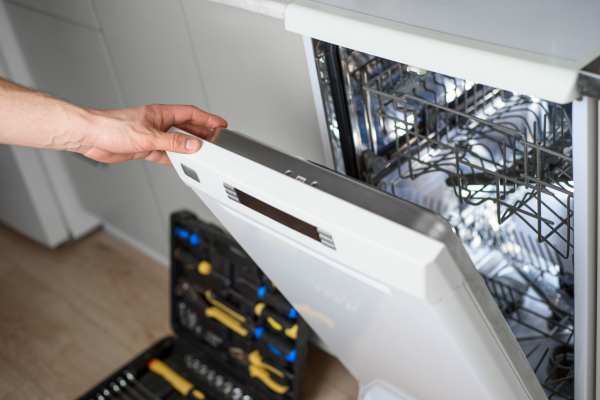
Learning how to drain a dishwasher, don’t overlook the power of hot water. Running a cycle with hot water can help dissolve any residual grease or food particles that may be clogging the drain. However, avoid using cold water, as it’s less effective at breaking down grease buildup. It’s also important not to skip checking your dishwasher’s heating element. If the heating element isn’t functioning properly, hot water won’t reach the necessary temperature to clear debris. Regularly ensuring the heating element works efficiently can prevent drainage issues and improve overall cleaning performance. By addressing these factors, your Dish cleaning machine can drain more effectively and perform better.
When to Call a Professional
While many dishwasher drainage issues can be fixed with basic troubleshooting, there are times when it’s best to call a professional. If the problem persists despite your efforts or if you suspect a faulty drain pump, electrical issue, or other complex malfunction, it’s time to seek expert help. Professional repairs may be necessary to avoid further damage and ensure your Dish cleaning machine is functioning safely and efficiently. Keep in mind that repair costs can vary, and you may need to wait for an appointment, depending on availability. A skilled technician will quickly diagnose and resolve the issue, saving you time and preventing future problems.
Conclusion
While many dishwasher drainage issues can be fixed with basic troubleshooting, there are times when it’s best to call a professional. If the problem persists despite your efforts or if you suspect a faulty drain pump, electrical issue, or other complex malfunction, it’s time to seek expert help. Professional repairs may be necessary to avoid further damage and ensure your Dish cleaning machine is functioning safely and efficiently. Keep in mind that repair costs can vary, and you may need to wait for an appointment, depending on availability. A skilled technician will quickly diagnose and resolve the issue, saving you time and preventing future problems.

